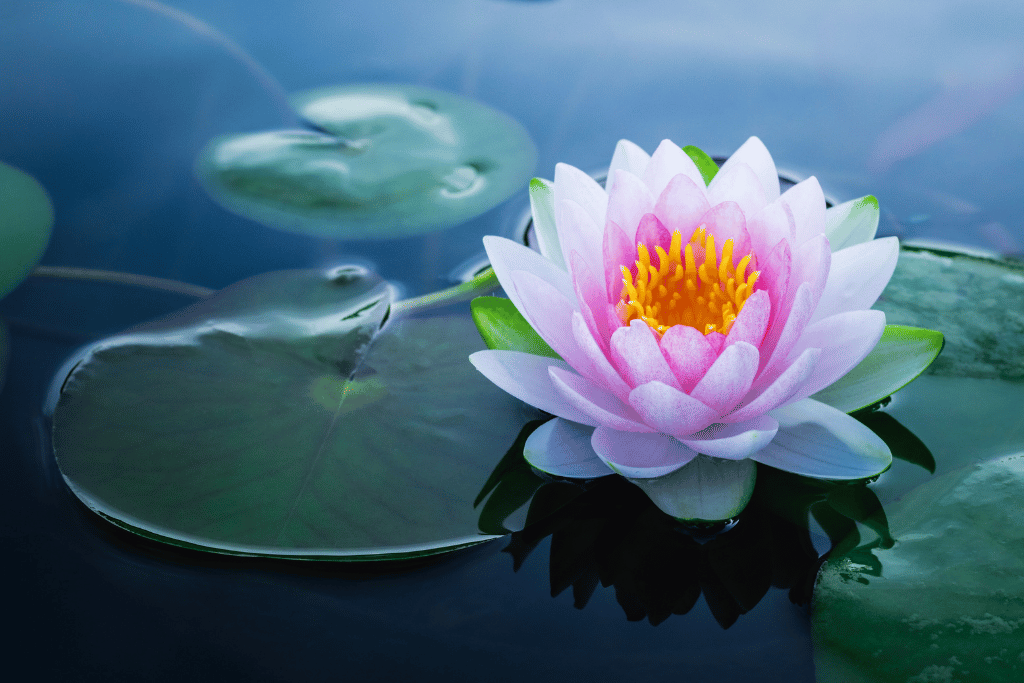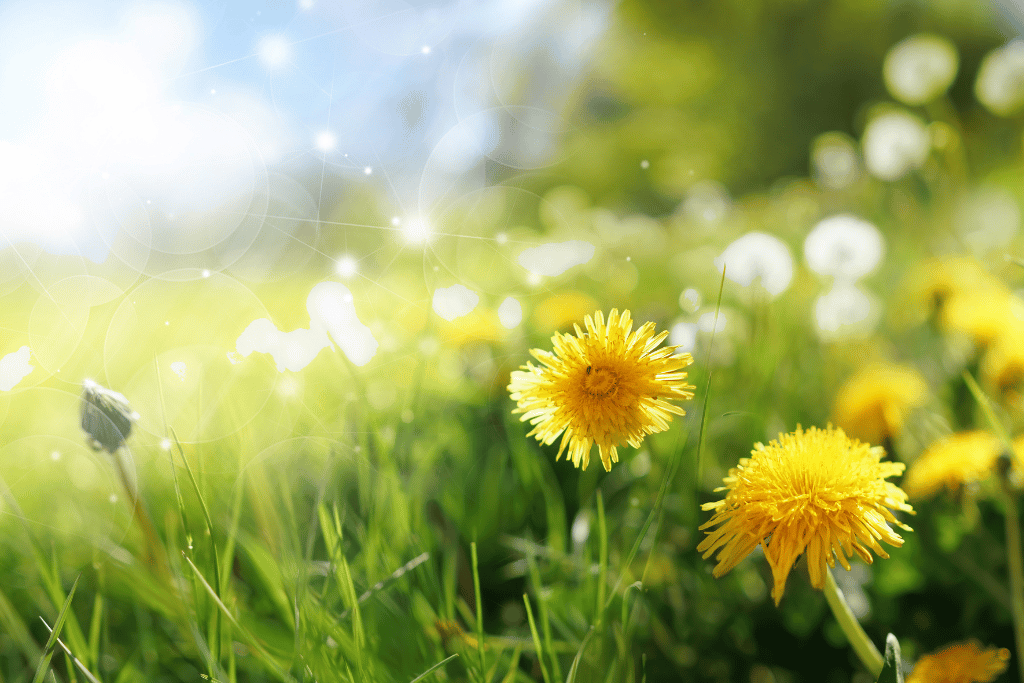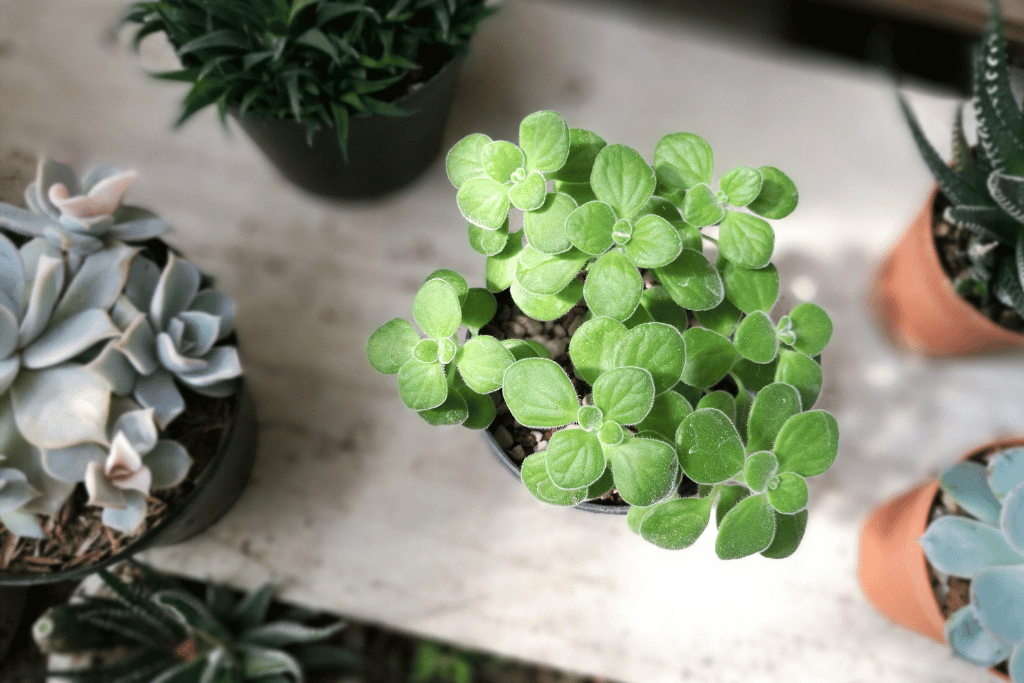
Looking to spice up your green oasis with something truly special? Then the Vicks plant is just what you need! With its velvety leaves and distinctive camphor-like scent, this succulent is sure to catch the eye and tantalize the nose. But that’s not all – it also has a range of practical applications, from treating respiratory problems to warding off unwanted bugs. So why settle for ordinary when you could introduce an outstanding beauty to your home?
Vicks Plant Overview
The Vicks plant, scientifically known as Plectranthus tomentosa, is a member of the mint family, Lamiaceae. This aromatic herb is also known as Succulent Coleus and Cuban Oregano and hails from the tropical regions of Africa and Madagascar, where it thrives in warm and humid conditions.
As an herbaceous perennial, this fragrant green typically grows up to a height of 1 to 2 feet (about 30 to 60 cm) and has a spreading, bushy habit. Its lush verdant leaves are ovate in shape, with a velvety texture and prominent veins. The plant’s foliage is characterized by a distinctive camphor-like scent that is reminiscent of the popular Vicks VapoRub ointment, hence its common name. While many would picture it as a bloomless greenery, it actually produces small, tubular flowers that boast a pink or lavender color. The flowers bloom in late summer to early fall, and while they are not particularly showy, they still add an additional decorative element to the plant’s overall looks.
This striking greenery is a prominent pick for both indoor and outdoor settings, depending on the climate. In temperate regions, it is often grown between four walls, while in warmer climates, it feels well outdoors in a light-scarce or partially shady location. Let’s even crank it up a notch! This multifunctional botanical can be an excellent choice for hanging baskets and given its moderate light needs, it makes a perfect plant for shaded porches!
Overall, the Vicks plant is a fascinating and visually appealing addition to any collection of houseplants or garden landscapes. Its unique appearance and aroma-packed qualities make it a distinctive and memorable green, just right for adding a touch of elegance and intrigue to any space.
Vicks Plant Uses
You wouldn’t believe how multifaceted this succulent is! The Vicks plant’s benefits are numerous and include medicinal, aromatic, and ornamental purposes. The leaves of the plant contain a volatile oil that is utilized to treat respiratory problems such as bronchitis, asthma, and coughs. Moreover, this rejuvenating green also prides itself on insect-repelling properties and is deployed as natural pest control. Last, but not least, it is known for its attractive, suede-like leaves and is often grown as an ornamental addition to gardens and homes.
Vicks Plant Care Instructions
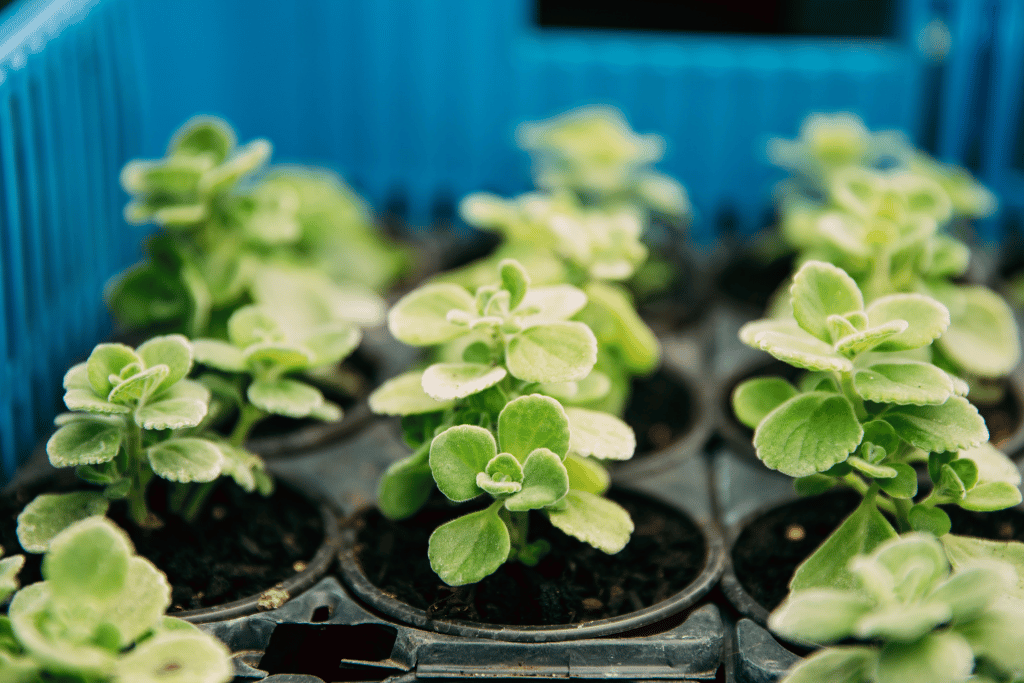
Soil
If you wish to set your succulent off on the way to thriving, make sure to select a well-draining soil for it. A cactus or succulent potting mix will do just great. This ensures that the roots of the plant do not become waterlogged, thus avoiding potential root rot. If you don’t have access to the most suitable mix, don’t be discouraged! You can always make your own by combining equal parts of perlite, sand, and peat moss. In addition, it’s also essential to note that when repotting the Vicks plant, you should gently loosen the root ball and remove any dead roots before planting it in the new soil.
Light
This scented botanical prefers bright spots without indirect sunlight and is among those herbs that live long in shady locations. It’s crucial to rotate the plant every few weeks to allow for even growth on each side. If the greenery doesn’t have access to adequate light, you may notice the leaves start to stretch or become smaller in size. On the other hand, if the plant is receiving excessive sun exposure, you may find that its foliage starts to curl or turn brown around the edges. Don’t worry if your home has no perfect light conditions – using an artificial grow light might also be enough for the succulent to maintain its best shape.
Temperature
Caring for the Vicks plant happens best between temperatures of 60-75°F (15-24°C). Be aware to keep it away from any sudden changes, such as near a door or window. If the temperature drops below 60°F (15°C), the plant may start to suffer. Similarly, if the temperature rises above 75°F (24°C), the plant will potentially become stressed. Therefore, avoid placing it near any drafty areas or spots with extreme temperature fluctuations, like next to a heating or cooling vent.
Water
It’s good news that your new pot-dweller is drought-tolerant and won’t get upset if you forget to water it once or twice. Generally, the best time to give your aroma-filled friend a drink is when the top inch of the potting mix starts to feel dry to the touch. When watering, make sure to hydrate the soil directly and not the leaves of the plant, as this can cause water to collect in the center of the greenery and lead to rot. Overwatering is one of the most frequent mistakes even advanced gardeners tend to fall for, so be sure to allow the mix to dry out before you grab the can again.
Humidity
As a tropical native, the Vicks plant thrives in moderate to high humidity levels. In case the air in your place is arid, I recommend increasing its water content by putting a tray of water near the plant or investing in a humidifier. However, too much humidity might be harmful too and lead to fungal diseases. Besides, refrain from placing the herb near any sources of dry air, such as air conditioning or heating vents, as this brings about dry foliage quite quickly. It’s key to maintain a balance of humidity to ensure that your leafy friend feels good in its skin.
Fertilization
The Vicks plant does not require frequent fertilization. It’s best to use a balanced fertilizer once a month during the growing season. But do not fertilize the greenery during the dormant season, which runs from the fall through winter. Over-fertilizing may result in plant stress, which manifests in the form of stunted growth or yellowing of the leaves. Therefore, remember to follow the instructions on the product package to rule out the chance of over-fertilization.
How To Propagate The Vicks Plant

Multiplying your precious greens might seem daunting at first, but it is usually a straightforward process that yields beautiful results. With a little bit of patience and the right technique, the propagation of Vicks plant will be smooth and bountiful. Below I’ll walk you through the step-by-step procedure that if you follow carefully, you’ll enjoy fascinating and thriving additions to your garden soon enough!
- Choose the right time: Propagation is best done in the spring or summer when the plant is actively growing.
- Take cuttings: Using a properly cleaned and sharp pair of scissors and take a cutting from the stem that is at least 4 inches long. Make sure it has at least one set of leaves.
- Remove the leaves close to the bottom: Gently rid the cutting of the lower leaves, leaving only a few at the top.
- Use rooting hormone: This step is optional, but it can increase your chances of success. Dip the bottom of the cutting in rooting hormone to accelerate growth.
- Prepare the soil: Fill a pot with a well-draining mix. Use your finger to create a hole in it.
- Plant the cutting: Carefully place the offshoot in the hole and cover it with soil. Press the mix down slightly to check if your propagation piece is stable.
- Water it: Give this little new life some thorough watering, but don’t overdo the hydration. Remember: the soil should be damp, but not soaked.
- Provide the right environment: Put the container in a warm and bright location, but not in scorching sunlight. The offshoot must be kept moist and warm, but not too humid.
- Wait until roots start to show up: Be patient and wait for the roots to develop. This will most likely take at least a couple of weeks.
- Transplant the cutting: Once roots have formed, it is ready to be transplanted into a larger pot or planted directly in the ground.
Vicks Plant Potential Health Problems
Even though this vibrant succulent is relatively easy to care for, it’s not immune to certain kinds of pests and diseases. Let’s discover the most common type of wrongdoers that may have a health-degrading effect on this useful herb:
One of the most typical pests that can afflict the Vicks plant is spider mites. These tiny insects attack and feed on the sap, causing discoloration and curling of the leaves. To prevent this issue, humidify the surroundings of your leafy companion without overwatering it.
Another frequent problem that potentially arises in this green is mealybugs. These small, cottony insects feast on the sap too, and cause hindered growth with yellow foliage. To get rid of mealybugs, dip a cotton swab in rubbing alcohol and wipe them off the leaves.
The Vicks plant can also be susceptible to fungal diseases, such as powdery mildew and leaf spot. The former appears as a white powder on the foliage, while the latter leads to brown spots on the leaves. To circumvent this scenario, don’t go too heavy on hydrating and choose an area with proper air ventilation.
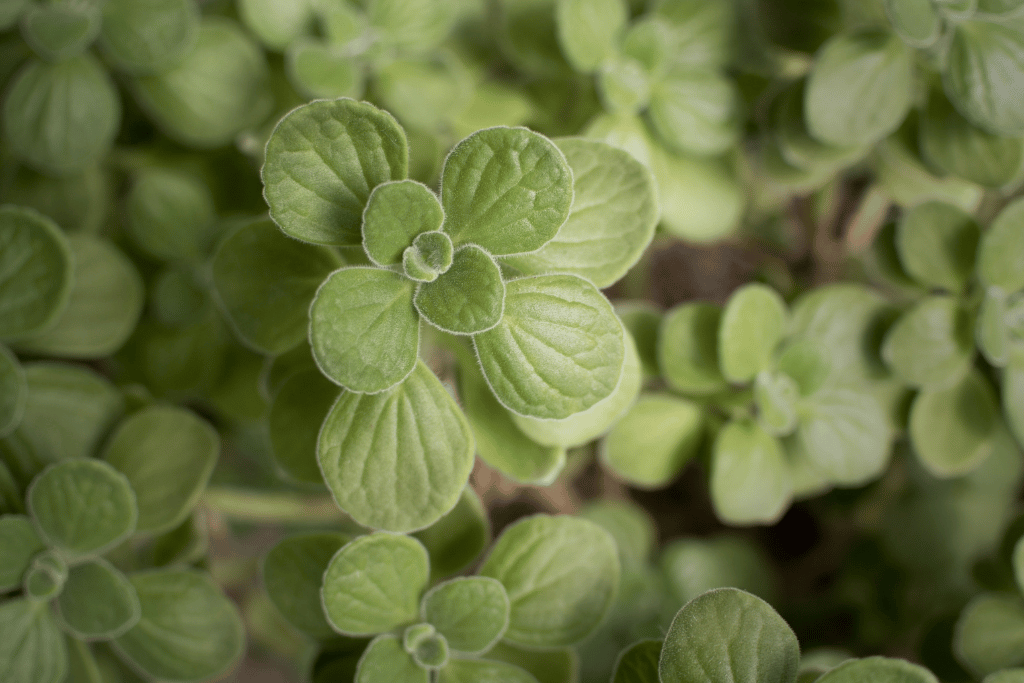
The Bottom Line
Watching the Vicks plant grow and thrive under your care is a truly special experience. With its moderate maintenance requirements and unique appearance, this herb is perfect for anyone who wants to reap the benefits of plants without stress. Whether you’re looking to add some natural flair to your surroundings or simply enjoy the fragrant aroma of camphor, this fabulous succulent is sure to delight and inspire.
Frequently Asked Questions (FAQ)
Vicks plant vs. Cuban Oregano: Are they the same?
Many people mistake Vicks plant and Cuban oregano for one another because they both emit a familiar menthol scent. Nevertheless, Cuban oregano, which also goes by names like Mexican Mint and Spanish thyme, is a distinct herb that is occasionally misidentified as the Vicks plant. So, it’s essential to be cautious when labeling or purchasing these plants, as you might end up with the wrong one!
Is the Vicks plant rare?
No, it is not considered a rare plant and can often be found in local nurseries or online plant stores. The Vicks plant is a great addition to a collection of indoor or outdoor plants, and its unique looks and scent make it a popular choice among green thumb enthusiasts.
Is the Vicks plant poisonous to pets?
While the Vicks plant is not known to be highly toxic to pets, it is recommended to keep it out of reach of cats and dogs. If ingested, the succulent may cause mild gastrointestinal discomfort or irritation to the mouth and throat. It is always best to err on the side of caution and keep potentially harmful greenery away from your furry friends.
Is the Vicks plant edible?
This versatile multi-tasker is not typically consumed as a food due to its strong and unique odor and medicinal properties, making it more appropriate for use as a natural remedy rather than a culinary ingredient.


